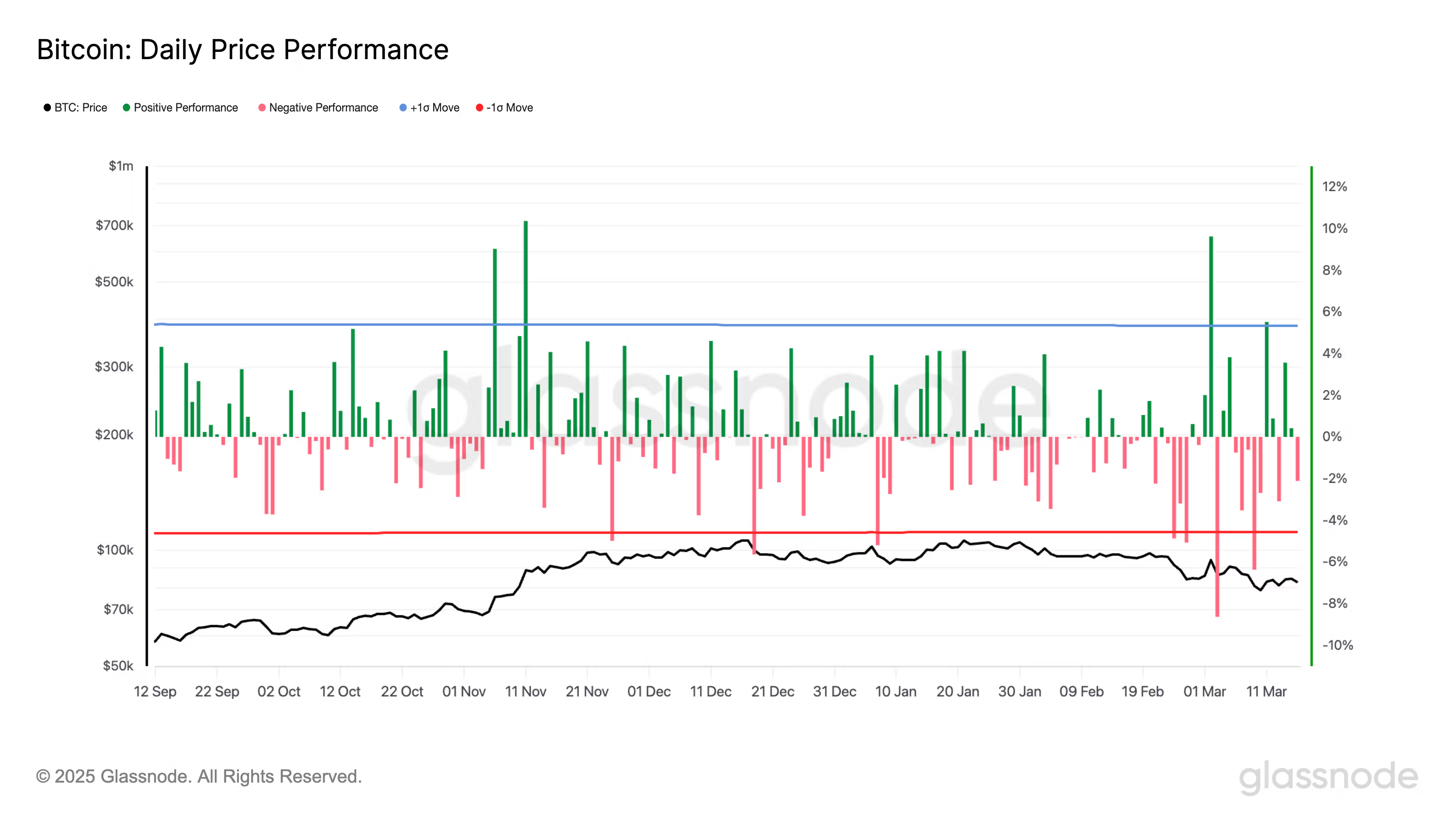Bitcoin’s Monday Declines: What Lies Ahead for Investors? | 2025

Bitcoin’s Monday Declines: What Lies Ahead for Investors?
In recent weeks, Bitcoin, the largest cryptocurrency by market capitalization, has been on a rollercoaster ride of price volatility. This fluctuation has been influenced by a variety of factors, including geopolitical tensions, tariffs, and rising global bond yields. As we delve deeper into the market dynamics, it becomes evident that the weekend’s nervousness has a tendency to spill over into Mondays, leading to a pattern of declines that investors are keenly observing.
Understanding Bitcoin’s Recent Performance
Data from Velo indicates that Mondays and Thursdays have emerged as the most negative days of the regular workweek over the past three months. Notably, Sunday has been identified as the worst-performing day of the week overall, with an average price decline of 1%. This trend suggests that weekends tend to perform slightly worse than weekdays in terms of Bitcoin’s price performance.
Recent Monday Declines
Bitcoin has faced a challenging start to the week, with losses recorded on the past four Mondays. According to Coinglass data, the cryptocurrency experienced a decline of 0.31% on February 17, followed by a more significant drop of 4.6% on February 24. The downward trend continued with an 8.5% decline on March 3 and a further 2.6% drop on March 10. These figures highlight a concerning trend for investors as Bitcoin has dropped approximately 30% from its all-time high in late January, coinciding with a 10% slide in the S&P 500.
Factors Influencing Bitcoin’s Volatility
Several factors contribute to the volatility of Bitcoin’s price, particularly in the current economic climate. Geopolitical tensions, such as conflicts between nations, can create uncertainty in the markets, leading to fluctuations in investor sentiment. Additionally, tariffs imposed on goods and services can impact global trade, further influencing market dynamics.
Rising global bond yields also play a crucial role in shaping investor behavior. As bond yields increase, investors may shift their focus from riskier assets like cryptocurrencies to safer investments, leading to a decline in demand for Bitcoin. This shift in investment strategy can exacerbate price declines, particularly on Mondays when market sentiment is often influenced by weekend developments.
The Role of Market Sentiment
Market sentiment is a powerful driver of cryptocurrency prices. The emotional reactions of investors can lead to rapid price changes, especially in a market as volatile as Bitcoin. The fear of missing out (FOMO) and fear, uncertainty, and doubt (FUD) can both play significant roles in shaping market behavior. When negative news emerges, such as regulatory crackdowns or security breaches, it can trigger panic selling, leading to further declines in price.
Expert Insights: James Van Straten’s Analysis
To gain a deeper understanding of Bitcoin’s current situation, we turn to James Van Straten, a Senior Analyst at CoinDesk. With a specialization in Bitcoin and its interplay with the macroeconomic environment, James provides valuable insights into the factors influencing the cryptocurrency market.
Previously, James worked as a Research Analyst at Saidler & Co., a Swiss hedge fund, where he developed expertise in on-chain analytics. His work focuses on monitoring flows to analyze Bitcoin’s role within the broader financial system. James emphasizes the importance of understanding the macroeconomic landscape when evaluating Bitcoin’s price movements.
Bitcoin’s Role in the Financial System
According to James, Bitcoin’s role within the financial system is evolving. As more institutional investors enter the market, the dynamics of supply and demand are shifting. This increased interest from institutional players can lead to greater price stability in the long run, but it can also contribute to short-term volatility as these investors react to market developments.
James also serves as an advisor to Coinsilium, a UK publicly traded company, where he provides guidance on their Bitcoin treasury strategy. His insights into the institutional adoption of Bitcoin highlight the growing recognition of the cryptocurrency as a legitimate asset class.
Investment Strategies for Bitcoin
For investors looking to navigate the current landscape, developing a sound investment strategy is crucial. Here are some key considerations:
Diversification
Diversifying your investment portfolio can help mitigate risk. While Bitcoin may be a significant part of your investment strategy, consider allocating funds to other assets, such as stocks, bonds, or real estate. This approach can provide a buffer against the inherent volatility of cryptocurrencies.
Long-Term Perspective
Investors should adopt a long-term perspective when it comes to Bitcoin. While short-term price fluctuations can be alarming, focusing on the long-term potential of the cryptocurrency can help investors weather the storm. Historical data shows that Bitcoin has experienced significant price increases over extended periods, making it a compelling investment for those willing to hold.
Stay Informed
Staying informed about market trends and developments is essential for making informed investment decisions. Follow reputable news sources, engage with expert analyses, and participate in discussions within the cryptocurrency community. Knowledge is power, and being well-informed can help you navigate the complexities of the market.
Conclusion: What Lies Ahead for Bitcoin?
As Bitcoin continues to grapple with price volatility and recent declines, investors are left wondering what lies ahead. The interplay of geopolitical tensions, rising bond yields, and market sentiment will undoubtedly shape the future of the cryptocurrency. While the recent Monday declines may be concerning, it is essential to consider the broader context and the potential for recovery.
In the coming weeks, investors should remain vigilant and adaptable, ready to respond to market changes. By understanding the factors influencing Bitcoin’s price and developing a sound investment strategy, investors can position themselves for success in the ever-evolving cryptocurrency landscape. For more insights, you can read the original article here.







